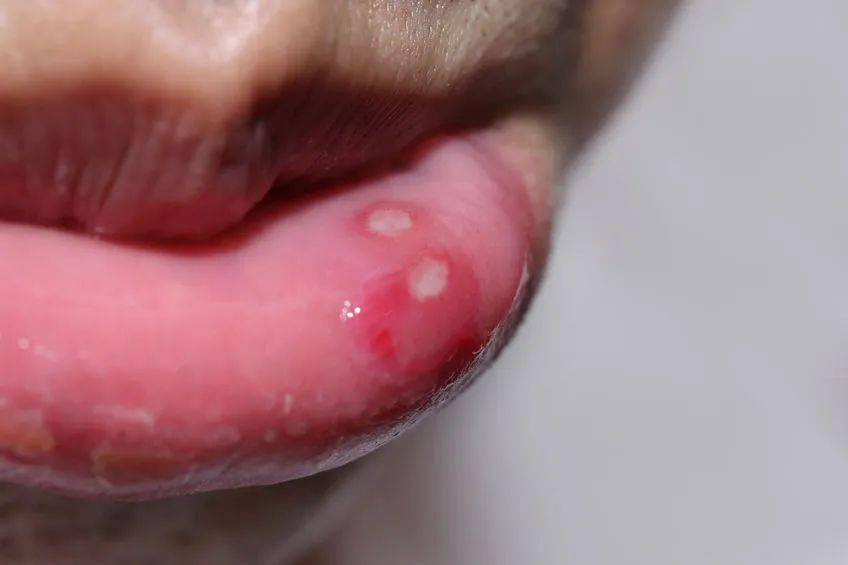
There’s a unique kind of worry that comes with finding a sore on your body. It’s a visible sign that something is wrong, a breach in your body’s first line of defense. But that worry can deepen into genuine concern when you notice a pattern. It’s not just one sore; it’s two. Or a small cluster. They might be close together, almost like twins, or they might appear on corresponding parts of the body—both elbows, both knees, or mirrored on opposite sides of the torso.
This is more than a coincidence. Sores in pairs are a distinct signal from your body. Sores in pairs? The infection is spreading… along the pathways of your nerves, and it’s time to listen to the map it’s drawing.
Before we let the word “spreading” trigger full-blown panic, it’s crucial to understand what this means. This isn’t a random, uncontrolled invasion. It’s a very specific kind of infection following a very specific roadmap—the intricate network of your nervous system.
The Most Likely Culprit: The Ghost of Chickenpox
For many people over 50, this story begins in childhood, with a common and itchy illness: chickenpox. After you recovered from those spotty, feverish days, you likely thought the virus was gone for good. It wasn’t. The varicella-zoster virus, in a brilliant and devious survival move, retreated from your skin and hid in a dormant state within your nerve ganglia—the clusters of nerve cells near your spinal cord.
It can lie there silently for decades, held in check by your immune system. But as we age, or during times of significant stress, illness, or immune suppression, that vigilant immune system can weaken its guard. This is when the virus sees its chance. It reactivates, but not as chickenpox. It re-emerges as shingles (Herpes Zoster).
And it doesn’t reactivate randomly. It travels back down the very nerve pathway where it was hiding. This is why shingles almost always appears in a tell-tale pattern:
- A Strip or Belt: It typically affects a single dermatome—a specific area of skin supplied by a single spinal nerve. This often results in a blistering rash that wraps around one side of the torso or waist, like a belt.
- Pairs and Clusters: Sores will appear grouped together or in lines along this nerve pathway. You might see two distinct patches on the same side of your back, or a line of blisters traveling from your spine around to your chest.
- The Prodrome: Often, before the sores even appear, people experience a burning, tingling, itching, or stabbing pain in that specific area. This is the virus irritating the nerve, a warning shot before the main event.
So, when you see sores in pairs or clusters on one side of your body, you are literally looking at a map of a reactivated nerve. The infection is spreading along the nerve, not randomly across your skin.
Other Possibilities: Ruling Out the Rest
While shingles is the classic presentation for paired sores along a nerve, a doctor will consider other conditions.
- Contact Dermatitis: If you brushed against poison ivy or a new chemical, it could affect two areas that made contact. However, this rash is usually intensely itchy, not painful, and doesn’t follow a nerve-band pattern.
- Impetigo: This bacterial skin infection can cause clustered sores that crust over, but it’s usually not as painful as shingles and doesn’t respect the “one side of the body” rule.
- Herpes Simplex: The cold sore virus (HSV-1 or HSV-2) can cause clusters of blisters, but these typically recur in the same localized spot (like the lip or genitals) and are not distributed along a nerve pathway across the torso or face.
Why This Matters: The Risk of Postherpetic Neuralgia (PHN)
The urgency in diagnosing and treating shingles quickly isn’t just about the sores themselves. It’s about what comes after. The real danger of shingles is the potential for long-term nerve pain called postherpetic neuralgia (PHN).
After the blisters crust over and heal, the damaged nerve can continue to send pain signals to the brain. This pain can be debilitating—a burning, aching, or stabbing sensation that can last for months or even years. The risk of developing PHN increases significantly with age, making it a major concern for the 50+ population.
Your Action Plan: Time is of the Essence
If you suspect you have shingles, you must act quickly.
- Don’t Wait: See your doctor or go to an urgent care clinic within 72 hours of the rash appearing. This golden window is critical.
- Get Diagnosed: A doctor can usually diagnose shingles just by looking at the distinctive rash.
- Start Antiviral Medication: If started early, prescription antiviral drugs (like acyclovir, valacyclovir, or famciclovir) can help the sores heal faster, reduce the severity of the outbreak, and, most importantly, significantly lower your risk of developing the chronic pain of PHN.
- Manage the Pain: Your doctor can also prescribe medications to help manage the acute nerve pain.
- Prevent the Problem: If you are over 50 and have not had the Shingrix vaccine, talk to your doctor about getting vaccinated. It is the most effective way to prevent shingles and the complications of PHN.
Sores in pairs are not a random occurrence. They are a clear, visual message that a dormant infection has reawakened and is traveling the superhighways of your nerves. By recognizing this pattern and seeking immediate treatment, you are doing more than just treating a rash. You are protecting your nerves from long-term damage, ensuring that your later years are defined by comfort and vitality, not by chronic pain. It’s a powerful act of self-care, giving your body the support it needs to quiet a ghost from its past.